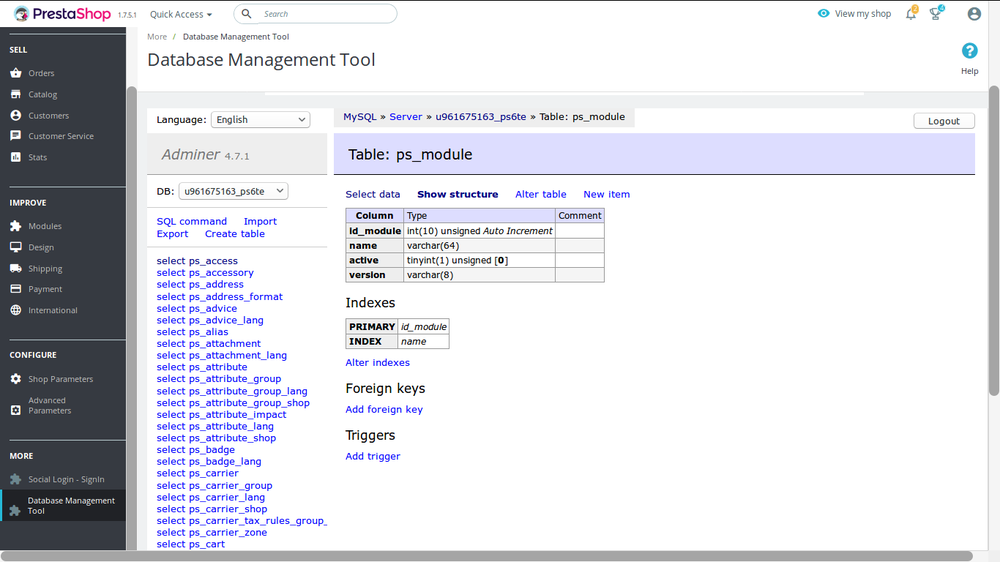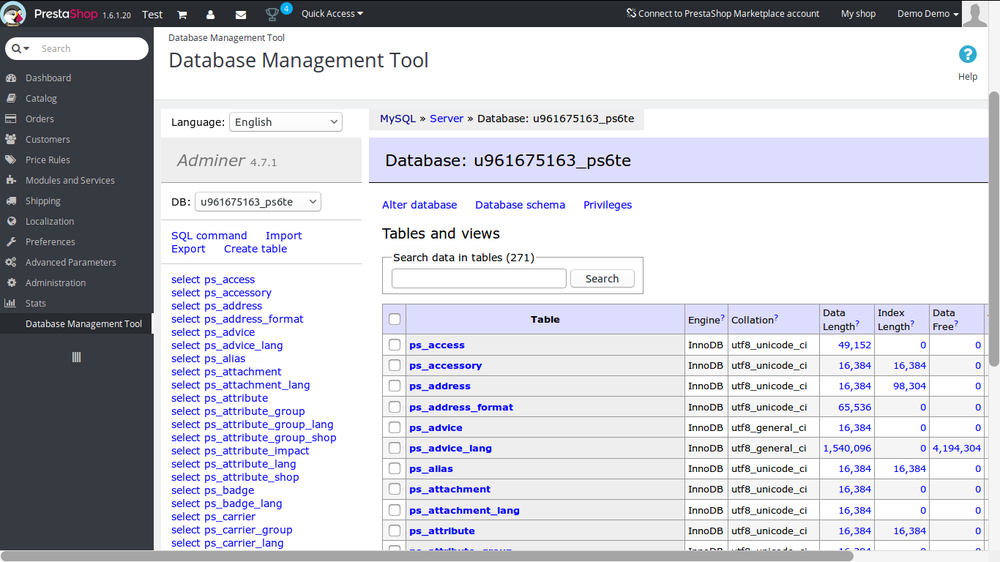Search the Community
Showing results for tags 'Join'.
-
Hallo ihr Lieben, ich versuche seit mittlerweile mehreren Tagen im SQL Manager (im Backend) eine Abfrage mit JOIN zu erstellen bekomme immer die Fehlermeldung "Falsche SQL-Abfrage". Alles was ich bisher im Netz recherchieren konnte, weisst darauf hin, dass es eigentlich kein Problem sein sollte...
-
Hi All, Greetings of the day. The module helps to integrate Database Management Tool Adminer in the back-office. This helps to run SQL queries, and database backups, and perform various jobs such as SELECT/INSERT/UPDATE/DELETE database tables and columns in tables. Also, get infor...
-
Hi, I would like to display a column with the product tags in admin (in product listing) : (On the screenshot, i’ve translated the column name "tag" by "artists" but it is the tag datas) I’ve created an override of AdminProductsController.php Then, I’ve extended the query in order to...
-
Hi, i have to make a query with gives me this structure. P=Array ( [0] => Array ( [id__dic] => 79 [id__shop] => 1 [id__lang] => 2 [symbol] => uoi [parent_symbol] => Mich [root_symbol] => 0 [folder] => 1 [oorder] =>...
-
I've want to add my cms page counter to every CMS page. I followed this topic . every thing is OK for implementaion of that tutorial but I've had a problem: my query is: SELECT pv.counter AS total FROM ps_page_viewed pv LEFT JOIN ps_page p ON pv.id_page = p.id_page LEFT JOIN ps_pag...
-
Hi, I am creating a custom sales package module. When a custom joins a package he get discount if specific number of customer are reached for the product in that sales package. In the product page when i create on custom button "JOIN", i need to check whether i am logged in the site or not.....
-
Hi, I want to get additional data to product-list.tpl, but this data is in another table (table structure is product_id, data). I need to join this table to product list sql, but I dont know where to find it. Tried to join this table in Category.php / getProducts(), but still I can't get this n...
-
Combine Categories? Bulk upload created multiple Categories but they should be one! For example it created cat for outwear and coats but all products in coats so I want to make them one cat called coats. And i have several one I need to do this for. The upload create sub categories or sizes so i nee...
- 1 reply
-
- categories
- Combine
-
(and 1 more)
Tagged with:
-
Hi guys, I was hoping someone could help me with my problem: I am creating a module for prestashop and have created the admin back office tab so that I can add things to the module's database table. One of the table attributes is actually a foreign key from another table and I would like to...
.png.022b5452a8f28f552bc9430097a16da2.png)









